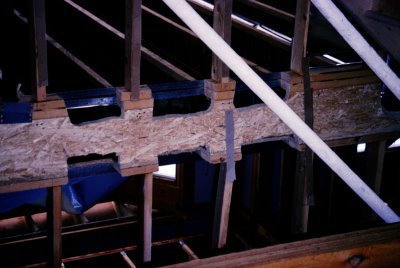
What’s wrong with this picture?
a) The rim joist is too heavily notched.
b) Using framing cavities as duct runs is frowned upon by codes and professional associations.
c) This passed the framing inspection.
d) All of the above
The answer is d, all of the above.
While it appears that this rim joist isn’t structural (there are studs below it), The Engineered Wood Association says that when cutting multiple holes in a rim joist, the spacing between the holes should be at least twice the length of the longest side of the longest rectangular hole. And according to Joe Lstiburek, the photographer, this also passed the framing inspection.
This leaves option b, “Using framing cavities as duct runs is a bad idea.” This photo shows both stud and joist cavities being used as return air ducts. In their duct design guide Manual D, the Air Conditioning Contractors of America (ACCA) recommend not using panned joists for return ducts, and the 2006 IRC and IECC codes prohibit joist cavities for supply ducts. It’s too bad that neither does both.
Framing cavities make bad duct runs because they leak and they’re connected to every part of the house via framing gaps and holes for wire and pipe. These leaks suck in air from unintended sources (outdoors, attics, garages, and crawl spaces). Along with this unintended air comes humidity, mold, dust, and whatever else is in these spaces (radon, carbon monoxide, gasoline, paint thinner, pesticides). Not only does this poison the indoor air supply, but it increases the heating and cooling loads while decreasing the efficiency of the mechanical equipment. A bad idea all the way around.
—Bruce Harley is technical director of Conservation Services Group and author of Insulate and Weatherize (Taunton 2002).
Photo by Joseph Lstiburek
Got a dumb building picture? Send it to dan[at]buildinggreen.com
Weekly Newsletter
Get building science and energy efficiency advice, plus special offers, in your inbox.





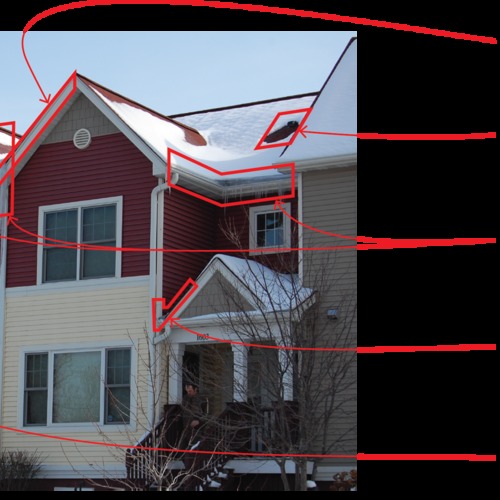
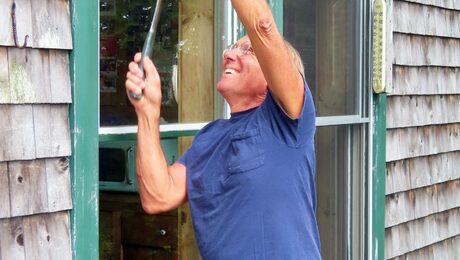


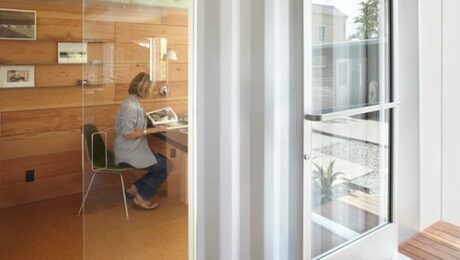
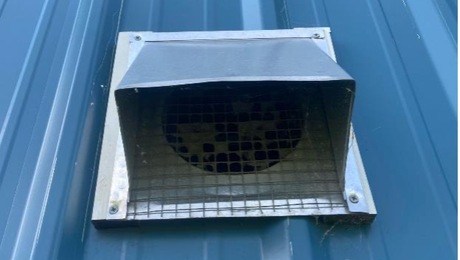
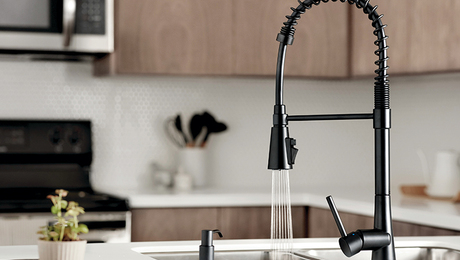
0 Comments
Log in or create an account to post a comment.
Sign up Log in